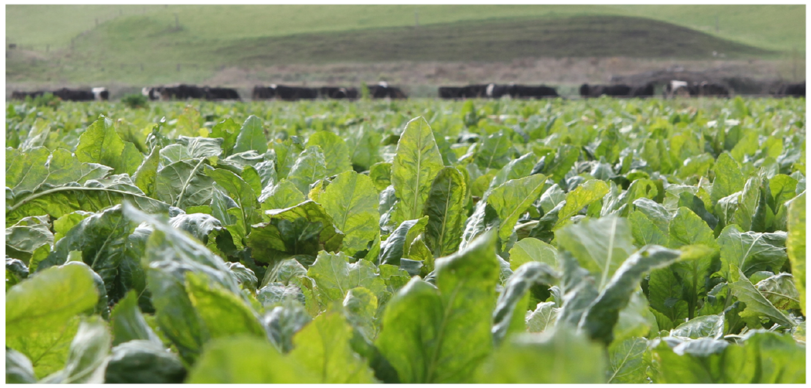Robbos is an excellent, consistent performer with more leaf protein for a better balanced diet, coupled with consistent high DM yield.
Higher leaf protein
As fodder beet is so high in carbohydrate, Robbos’ higher leaf protein, due to its excellent leaf quality, provides a better-balanced diet for animals.
Alternatively, this could be turned into a cost saving of around $1125/ha* by using as less expensive supplement when grazing Robbos crops.
Robbos leaf tested at 24.5% protein at the start of winter, versus Feldherr, Brigadier, Monro and SF1505Bv which averaged 21%.

(*Based on feeding 7.5tDM/ha (3kgDM/cow/day) good silage with 17% crude protein @$0.40/kgDM, versus good hay with 15% crude protein @$0.25/kgDM; We recommend feed testing crops & supplement before setting diet.)
Very high DM yield
Of the grazing types, medium DM beets provide significantly more yield and stock carrying capacity than the low DM beets. And within the medium DM cultivars Robbos has shown consistently high DM yield.
Fodder beet DM yields - medium and low drymatter (DM) cultivars

*Combined analysis of 5 trials from 2014-2017, varieties in two or more trials are presented. Cultivars with the same statistical significance letter are not significantly different at the LSD 5% level.
Palatable
Robbos has relatively soft orange-yellow bulbs, suitable for grazing by all stock types. Its high leaf quality can also help with transitioning stock onto beet.
Above ground %

*From 3 trials in Canterbury from 2008/09 to 2014/15. Cultivars were in at least two trials. Cultivars with the same statistical significance letter are not significantly different at the LSD 5% level.
Robbos seed
Based on feedback, Robbos seed coating no longer has insecticide and comes in 90,000 seed boxes.
Using Robbos




